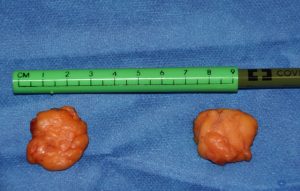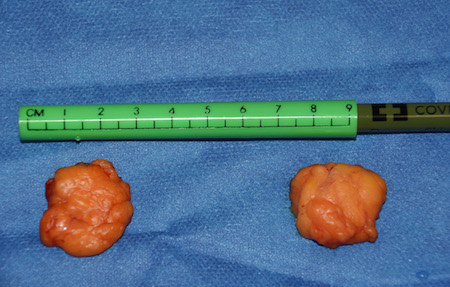
In the August 2021 issue of the journal Plastic and Reconstructive surgery an overview article on this topic was published entitled ‘ The Role of the Buccal Fat Pad in Facial Aesthetic Surgery’. In this paper the most relevant component was the cadaveric dissection done using either the traditional intraoral approach or the transcutaneous facelift approach…techniques that are revelant for how it might be approached in younger vs older patients. Excessive traction was applied through either approach to determine how easily extensions of the buccal fat pad could be removed with the main body.
The anatomy of the buccal fat pad was reviewed including the extensions from the central body. (the deeper temporal and pterygoid and the more superficial buccal extension) The central body of the buccal fat pad is described as having three lobes. (anterior = subzygomatic, intermediate =lateral maxilla, posterior = temporal) Its believed purpose is to allow the muscle in which it lies between ad around to glide in a smooth and uninterrupted fashion.
The authors also review the known studies that show that buccal fat pad atrophy does occur with aging as well as the potential for some descent of its location. Whether the external facial deflation effects seen are more from atrophy the descent is not fully known.
The purpose of buccal fat pad removal in younger patients is in an effort to deround their face. For many patients this is done in an effort to reduce their chubby cheek appearance. For others who really do not have round chubby cheeks their goal is to improve facial definition and angularity or to make their cheekbones and jawline more visible. My speculation would be that the long term risks of significant facial lipoatrophy and facial deformity is in the latter and not the former.

The main take home points in this article is that excessive traction in intraoral removal of the main body of the buccal fat pad is counterproductive. It removes extensions of the buccal fat pad that do not contribute to the desired aesthetic facial thinning effects and places the patient at greater risk for long term undesired facial thinning. Removals that are limited to the central body/buccal extension would lower there risk of any long term adverse effects. The role of buccal fat pad excision in older patient is either extremely limited to nonexistent.
Dr. Barry Eppley
Indianapolis, Indianapolis






